Sean Bienvenidos, Japonistasarqueologos, A Una Nueva Entrega, Cultural-artística Vamos A Hablar Sobre


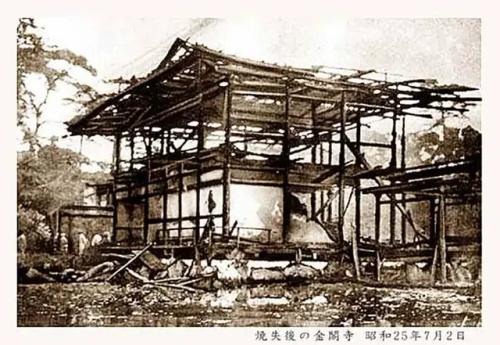
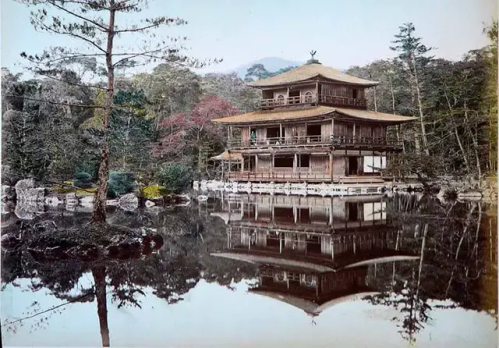



Sean bienvenidos, japonistasarqueologos, a una nueva entrega, cultural-artística vamos a hablar sobre Kinkaku-ji una vez dicho esto pónganse cómodos que empezamos. - El kinkaku-ji se localiza en la ciudad de Kyoto, en la prefectura de kansai. Kyoto fue una de las dos grandes capitales del Japón feudal porque su otra ciudad de gran peso fue Nara, pero eso es otra historia. - El Kinkaku-ji, fue construido en el siglo XIV, el que se ve actualmente es una reconstrucción porque el original se destruyó en un incendio en 1950 y el actual data de 1980 aproximadamente ya en 1880 perdió su revestimiento de pan de oro, fue La residencia de Ashikaga yoshimitsu tras su muerte lo donó a la orden religiosa y pasó a ser un templo budista. - Espero que os guste y nos vemos en próximas publicaciones. Fuentes de foto: https://blogukiyoe.es/kinkaku-ji-en-el-ukiyo-e wikipedia - Welcome, Japanese archaeologists, to a new cultural-artistic installment, we are going to talk about Kinkaku-ji. Once that has been said, make yourself comfortable and we will begin. - Kinkaku-ji is located in the city of Kyoto, kansai prefecture. Kyoto was one of the two great capitals of feudal Japan because its other major city was Nara, but that is another story. - The Kinkaku-ji was built in the 14th century, the one currently seen is a reconstruction because the original was destroyed in a fire in 1950 and the current one dates from approximately 1980 and in 1880 it lost its gold leaf coating, it was La residence of Ashikaga Yoshimitsu after his death he donated it to the religious order and it became a Buddhist temple. - I hope you like it and see you in future posts. Photo sources: https://blogukiyoe.es/kinkaku-ji-en-el-ukiyo-e Wikipedia - 日本の考古学者の皆さん、新しい文化芸術の回へようこそ。金閣寺についてお話します。それが終わったら、落ち着いてから始めましょう。 - 金閣寺は関西県京都市にあります。京都は、もう一つの主要都市が奈良であったため、封建時代の日本の二大首都の一つでしたが、それはまた別の話です。 - 金閣寺は 14 世紀に建てられ、現在見られるものは再建されたものです。オリジナルは 1950 年の火災で焼失し、現在のものは 1980 年頃のもので、1880 年に金箔のコーティングが失われ、ラ邸でした。足利義満の死後、教団に寄進され仏教寺院となった。 - 気に入っていただければ幸いです。今後の投稿でお会いしましょう。 写真出典: https://blogukiyoe.es/kinkaku-ji-en-el-ukiyo-e ウィキペディア
More Posts from Noticiasarquelogicasjaponesas and Others


Sean bienvenidos a una publicación un tanto especial, ya que os vengo a hablar de un lugar especial, además voy a aprovechar para hacer el especial 2450 seguidores y creo que este lugar merece ser conocido por más gente, además de aclarar dudas dicho esto empecemos. - Seguramente os estéis preguntando ¿De dónde vienen los Tulipanes? ¿Cuál es el país insignia por excelencia?, para responder a las primeras preguntas: los tulipanes son originarios de Asia, sobre todo de los montes de Mongolia, poco después desde donde empezaron su extensión junto al imperio de Genghis Khan, hasta llegar a los montes turcos de Anatolia y posteriormente a Nederland. - Me gustaría aclarar un par de cosas antes de entrar en el asunto de esta publicación y considero que es necesario aclararlo de una vez por todas. Cuando hablamos de Holanda no hablamos de un país sino de una región compuesta por 12 regiones de las cuales Holanda está dividida en dos: la Holanda meridional y la septentrional, por favor cada vez que veo manuales con ese nombre o cuentas que la mencionan con ese nombre me pone malo. - Después de este pequeño sermón, festival se llama Kamiyūbetsu y se localiza en Hokkaido en la ciudad de Yūbetsuchō al lado del río Yūbetsu a esta región llegaron en la década de los años 50 del siglo pasado, fue declarada parque municipal de tulipanes en 1988 por la Unesco. - Espero que os haya gustado esta pequeña Nederland en la prefectura de Hokkaido y que además haya resuelto el gran error de llamar a holanda a un país siendo una región, ya que hay gente que la sigue llamando así después de todo. Os deseo una feliz semana y nos vemos en próximas publicaciones de arqueología nipona. - Welcome to a somewhat special publication, since I am here to talk about a special place, I am also going to take the opportunity to make the special 2450 followers and I think that this place deserves to be known by more people, in addition to clarifying doubts, having said that, let's start. - Surely you are wondering, where do tulips come from? Which is the flagship country par excellence? To answer the first questions: tulips originate in Asia, especially in the mountains of Mongolia, shortly after from where they began to spread along with the empire of Genghis Khan, until they reached the Turkish mountains of Anatolia and later to Nederland. - I would like to clarify a couple of things before getting into the subject of this post and I think it is necessary to clarify it once and for all. When we talk about the Netherlands we are not talking about a country but about a region made up of 12 regions of which the Netherlands is divided into two: the southern Netherlands and the northern Netherlands, please, every time I see manuals with that name or accounts that mention it with that name makes me sick. - After this little sermon, festival is called Kamiyūbetsu and it is located in Hokkaido in the city of Yūbetsuchō next to the Yūbetsu River. They arrived in this region in the 50s of the last century, it was declared a municipal tulip park in 1988 by UNESCO. - I hope you liked this little Nederland in the Hokkaido prefecture and that it has also solved the big mistake of calling a country Holland as a region, since there are people who still call it that after all. I wish you a happy week and see you in future Japanese archeology publications. - ちょっと特別な出版物へようこそ。私は特別な場所について話すためにここにいるので、特別な2450フォロワーを作る機会もあります。この場所は、明確にするだけでなく、もっと多くの人に知られるに値すると思います。疑わしいとは言っても、始めましょう。 - 確かにあなたは疑問に思っています、チューリップはどこから来たのですか?卓越した旗艦国はどれですか?最初の質問に答えるには、チューリップはアジア、特にモンゴルの山で発生し、チンギスカンの帝国とともに広がり始めてからすぐに、トルコのアナトリアの山に到達します。その後、ネダーランドへ。 - この投稿の主題に入る前に、いくつかのことを明確にしたいと思います。そして、それを完全に明確にする必要があると思います。オランダについて話すとき、私たちは国について話しているのではなく、オランダが2つに分割されている12の地域で構成されている地域について話します。オランダ南部とオランダ北部です。その名前のマニュアルを見るたびに、その名前でそれを言及しているアカウントは私を病気にします。 - この小さな説教の後、お祭りは上湧別と呼ばれます 北海道の湯別川に隣接する湯別町にあり、前世紀の50年代にこの地域に到着し、1988年にユネスコによって市営チューリップ公園に指定されました。 - 北海道にあるこの小さなオランダが気に入ってくれて、オランダを地域と呼ぶという大きな間違いも解決してくれたことを願っています。皆様のご多幸をお祈り申し上げますとともに、今後の日本の考古学出版物でお会いしましょう。






Sean bienvenidos a una nueva entrega de mitología nipona, en esta ocasión os presento a los Kodama en hiragana (こだま) ¿Qué son? Son unos seres, que pertenecen al sintoísmo, lo que correspondería a criaturas protectoras de los buques¿Os resultan adorables?. - Os recomiendo la película de La princesa Mononoke, espero que os haya gustado y nos vemos en próximas publicaciones. - 日本神話、今回はひらがなの「こだま」です。神道に属する存在で、船を守る生き物に相当するんだ。 かわいいと思うかい? - 映画「もののけ姫」はオススメです!気に入っていただけたでしょうか?また次の記事でお会いしましょう。 - Welcome to a new installment of Japanese mythology, this time I introduce you to the Kodama in hiragana (こだま) What are they? They are beings that belong to Shintoism, which would correspond to creatures that protect ships. Do you find them adorable? - I recommend you the Princess Mononoke movie, I hope you liked it and I'll see you in future posts.

Sean bienvenidosfanaticosarqueológicos a una nueva noticia arqueológica del país del sol naciente ¿Dé que trata dicha noticia? Pues a continuación sin más demora os traigo un supernotición del periodo Asuka(592-710).
-
Se han descubierto unos restos arqueológicos que datan del año 650 hace unos 1300 años de antigüedad en la antigua ciudad de Asuka en la prefectura de Nara, para la próxima publicación hablaremos de las prefecturas, aunque sea un resumen.
-
¿Quién ha encontrado estos restos arqueológicos? Fueron encontrados por el Instituto Arqueológico de Kashihara del que ya hablaremos próximamente. ¿Cuál era el uso de este canal? Serviría para desviar el agua que se desbordaba para llenar el estanque que os dejaré una ilustración del mismo.
-
Las piedras tienen un diámetro de 6 metros, las cuales están pavimentadas. Desde luego una gran obra hidráulica para su época. - Os deseo un feliz día y nos vemos en próximas publicaciones un cordial saludo.
-
考古学ファンの皆様、日出ずる国からの新しい考古学ニュースへようこそ。このニュースは何についてのものですか? さて、早速、飛鳥時代(592年~710年)のスーパーニュースをお届けします。
-
古都奈良県の飛鳥市で約1300年前の650年頃の遺跡が発見されたが、次回はまとめではあるが都道府県の話をしたいと思う。 - 誰がこれらの遺跡を発見したのでしょうか? それらは橿原考古学研究所によって発見されました。これについては後ほど説明します。 このチャンネルの用途は何ですか? これは、溢れ出た水を池に流すのに役立ちます。その図を残しておきます。
-
直径6メートルの石が敷き詰められている。 確かに当時としては素晴らしい水圧作業でした。
-
幸せな一日をお祈りいたします。また今後の出版物でお会いしましょう。心からご挨拶申し上げます。
-


Welcome archaeological fans to a new archaeological news from the country of the rising sun. What is this news about? Well, without further delay, I bring you a super news from the Asuka period (592-710).
-
Archaeological remains dating back to the year 650, about 1,300 years ago, have been discovered in the ancient city of Asuka in Nara Prefecture. For the next publication we will talk about the prefectures, even if it is a summary.
-
Who found these archaeological remains? They were found by the Kashihara Archaeological Institute, which we will talk about soon. What was the use of this channel? It would serve to divert the water that was overflowing to fill the pond, which I will leave you with an illustration of.The stones have a diameter of 6 meters, which are paved. Certainly a great hydraulic work for its time.
-
I wish you a happy day and see you in future publications, cordial greetings.


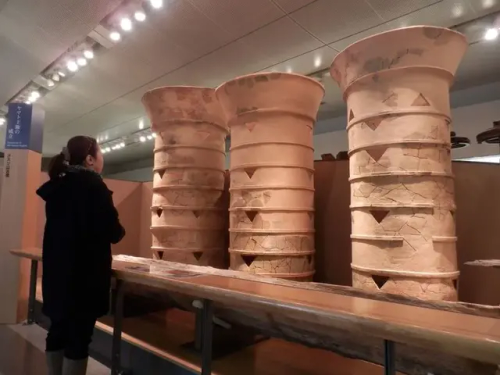

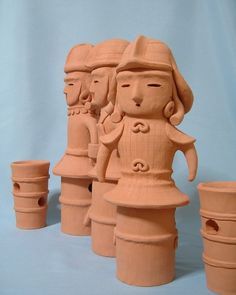
Sean bienvenidos japonistasarqueologicos a una nueva entrega de Arqueología Japonesa en esta ocasión nos trasladamos a la prehistoria japonesa dicho esto pónganse cómodos que empezamos. - Tengo el placer de presentaros a las esculturas Haniwa, ¿Qué significa este término?¿Cuándo surgió? Y ¿Cuál era su funciones? - Las primeras preguntas para este capítulo serán: ¿Cuándo surgió? Datan de los siglos VI y VII d.C Como ya comenté en varias ocasiones la cronología japonesa es difícil de entender para ojos occidentales ya que hay que verla con ojos orientales. - La segunda pregunta será ¿En donde podemos encontrar estas obras de arte?: La Podemos encontrar en multitud de lugares pero vengo a destacar uno en especial se trata de uno de los mejores juegos de Nintendo y su nombre es Atsumare Dōbutsu no Mori. - Espero que os haya gustado el capítulo 1 y nos vemos en los próximos capítulos de esta serie de historia y arqueología un cordial saludo.
-
日本考古学へようこそ。新しい日本考古学へ。今回は日本の先史時代に移ります。そうは言っても、気を楽にして始めましょう。
-
埴輪彫刻についてご紹介させていただきます。この言葉はいつ頃から生まれたのでしょうか?そしてその機能は何だったのでしょうか? - この章の最初の質問は次のとおりです。それはいつ出現しましたか?それらは西暦 6 世紀から 7 世紀のものです。 すでに何度か述べましたが、日本の年表は東洋の目で見なければならないため、西洋の目には理解しにくいものです。
-
2 番目の質問は次のとおりです。これらの芸術作品はどこで見つけることができますか?: さまざまな場所で見つけることができますが、特に 1 つを取り上げます。これは任天堂の最高のゲームの 1 つであり、その名前は「あつまれ どうぶつの森」です。
-
第 1 章を気に入っていただければ幸いです。この歴史と考古学シリーズの次の章でもお会いしましょう。
-
Welcome japonistasarqueologicos to a new installment of Japanese Archaeology. This time we move to Japanese prehistory. Having said that, make yourselves comfortable as we begin.
-
I have the pleasure of introducing you to the Haniwa sculptures. What does this term mean? When did it emerge? And what were its functions?
-
The first questions for this chapter will be: When did it emerge? They date back to the 6th and 7th centuries AD. As I have already mentioned on several occasions, Japanese chronology is difficult to understand for Western eyes since it must be seen with Eastern eyes.
-
The second question will be: Where can we find these works of art? We can find them in many places, but I am here to highlight one in particular. It is one of the best Nintendo games and its name is Atsumare Dōbutsu no Mori.
-
I hope you liked chapter 1 and I will see you in the next chapters of this series of history and archaeology. Best regards.


El clan Nanbu tenía un fuerte. ¿Qué es un daimyō? La gama que los samuráis ganaron más poder son los señores feudales, el sitio histórico de shojujitate fue la residencia del clan Nanbu, construido en la orilla norte del río mabuchi en la prefectura de Aomori. Estaban ubicados en el punto estratégico de comunicación. - Sin embargo, el castillo estaba cerca de los caminos oshu kaido y kazunokaido, el lugar estaba limitado por montañas al este-oeste y norte-sur, los 300 a 250 m la dimensión del fuerte era de aproximadamente 90.000 metros cuadrados. Como resultado de la excavación que el arqueólogo llevó a cabo hasta el edificio de pilares del escape más grande de la región de tohoku, se extiende 18 tramos de 36 m de norte a sur de 42 m, la estructura ha sido de dos pisos de altura y los pilares de la puerta de 45 cm la fecha del castillo de 1539 en la era de Teherán. - Cerámica de alta calidad y artefactos culturales honshu Ainu, se han recuperado más de 4000 tipos de cerámica vidriada medieval dentro del sitio, de los cuales siete décimos son guerras vidriadas chinas. - En resumen, la forma en que se puede discernir a partir de los elementos recuperados en los restos de shojujitate datan de la cultura del período Murumachi y Sengoku en Japón. - - En resumen, la forma en que se puede discernir a partir de los elementos recuperados en los restos de shojujitate datan de la cultura del período Murumachi y Sengoku en Japón. - 南部氏には砦がありました。大名とは?武士が勢力を拡大した範囲は領主領であり、青森県の馬渕川北岸に建てられた南部藩の居城であった正寿寺立史跡は交通の要所に位置していました。 しかし、城は奥州街道や鹿角街道に近く、東西南北は山に囲まれた場所でした。 300 から 250 m の砦の寸法は約 90,000 平方メートルでした。 18スパン36m南北42mに及ぶ東北地方最大級の脱獄の柱建造物を考古学者が発掘調査した結果、2階建てで門柱45cmの城郭時代の1539年テヘラン時代。 高品質の陶磁器と本州アイヌの文化的遺物、4000 種類以上の中世の釉薬を使った陶磁器が遺跡内から回収されており、そのうち 10 分の 7 が中国の釉薬を使った陶器です。 手短に言えば、正寿寺立遺跡の出土品から、室町時代と戦国時代の文化が日本に伝わる様子がわかる。 - The Nanbu clan had a fort. What is a daimyo? The range that the samurais won more power are the sir feudal, the shojujitate historic site was the residence of the Nanbu clan, built in the north bank of the mabuchi river in the Aomori prefecture were located in the strategic point of communication. However the castle was near the oshu kaido and Kazunokaido roads, the place was limited by mountains to the east-west and north - south; the 300 to 250 m the dimension of the fort was approximately 90.000 square meters. As a result of excavation the archaeologist conducted to the pillar building of the largest escape of the tohoku region extending 18 spans 36 m north-south spans 42 m, the structure has been two stories tall and gate pillars 45 cm the castle date of 1539 in the Tehran era. High quality ceramics and honshu Ainu cultural artifacts, more than 4000 types of medieval glazed ceramics have been recovered from within the site of which seven tenth are Chinese glazed warres. In short the manner it can be discerned from the items recovered at the shojujitate remains date Murumachi and Sengoku period culture to Japan. ソース写真/source photo: https://www.town.aomori-nanbu.lg.jp/page/1543.html

Capítulo 1 El origen de un país y su prehistoria, un paseo por la historia del país del sol naciente. Sean bienvenidos, a una nueva serie, de arqueología prehistórica, en esta ocasión, nos trasladamos al país del sol naciente. ¿Cuándo llegaron por primera vez los homínidos a Japón? ¿De qué vivían? Todo y mucho más lo iremos viendo en los próximos capítulos. Dicho esto, pónganse cómodos que empezamos.
-
Antes que nada, un poco de geografía: En este apartado analizaremos la geografía nipona de aquellos entonces. La parte norte del país estaba bajo una gran capa de hielo, además, Japón estaba prácticamente unido, fue a finales del pleistoceno, cuando llegó el holoceno (hace unos 12000 años), previamente, tuvieron lugar cuatro glaciaciones(Günz, Mindel, Riss y Würm las cuales tuvieron lugar en el cuaternario).
-
El holoceno abarca hasta nuestros días, este efecto hace desaparecer a los grandes animales, plantas, etc. ¿Había dinosaurios en el archipiélago antes de la llegada de los humanos?, este punto no nos cunde, pero haré un pequeño resumen, para que se hagan una idea. -
Espero que os esté gustando, en los próximos capítulos hablaremos en profundidad de todo, os deseo un cordial saludo mis queridos fanáticos.
-
Chapter 1 The origin of a country and its prehistory, a walk through the history of the country of the rising sun. Welcome to a new series of prehistoric archeology, on this occasion, we move to the country of the rising sun. When did hominids first arrive in Japan? What did they live on? We will see everything and much more in the next chapters. That being said, get comfortable and let's get started.
-
First of all, a little geography: In this section we will analyze the Japanese geography of those times. The northern part of the country was under a large ice sheet, in addition, Japan was practically united, it was at the end of the Pleistocene, when the Holocene arrived (about 12,000 years ago), previously, four glaciations took place (Günz, Mindel, Riss and Würm which took place in the Quaternary).
-
The Holocene extends to the present day, this effect makes large animals, plants, etc. disappear. Were there dinosaurs in the archipelago before the arrival of humans? This point is not relevant to us, but I will give a brief summary to give you an idea.
-
I hope you are liking it, in the next chapters we will talk in depth about everything, I wish you a cordial greeting my dear fans.
-
第一章 国の成り立ちと先史、日出ずる国の歴史を歩く。 先史考古学の新しいシリーズへようこそ。この機会に、私たちは日出ずる国に移ります。 原人が日本に初めて到来したのはいつですか? 彼らは何を食べて生きていたのでしょうか? 次の章ですべてを見ていきます。 そうは言っても、安心して始めましょう。
-
まず最初に、地理について少し説明します。このセクションでは、当時の日本の地理を分析します。 国の北部は大きな氷床の下にあり、さらに日本は事実上統一されており、完新世が到来した更新世の終わり(約1万2000年前)であり、以前は4回の氷河期が起こっていた(ギュンツ、ギュンツ、第四紀に起こったミンデル、リス、ヴュルム)。 完新世は現在まで続き、この影響により大きな動物や植物などが消滅します。 人類が到来する前、この列島には恐竜がいたのでしょうか? この点は私たちには関係ありませんが、イメージを伝えるために簡単にまとめておきます。
-
気に入っていただければ幸いです。次の章ではすべてについて詳しく説明します。親愛なるファンの皆様に心からのご挨拶を申し上げます。





Sean bienvenidos, japonistasarqueológicos a una nueva entrega, de arqueología en la que comentaremos, como las Herramientas de hace 2000 años, nos revelan la vida en el período Yayoi, una vez dicho esto pónganse cómodos que empezamos. — Las herramientas posiblemente tuvieran la influencia de china, al igual que otras muchas cosas del país del sol naciente, os pondré imágenes del museo en para que podáis ver el itinerario no sólo de las herramientas sino lo que podéis encontrar en sus adentros, hay que recordar que muchos de esos objetos fueron desenterrados por las personas ya mencionadas anteriormente. — Espero que os guste y nos vemos en próximas publicaciones, que pasen una buena semana. - 日本の考古学者諸君、ようこそ考古学の新連載へ。2000年前の道具が弥生時代の生活をどのように明らかにしたかを議論する。 - 道具はおそらく中国の影響を受けたもので、その他にも日出ずる国の様々なものがあります。博物館の写真をお見せしますから、道具の行程だけでなく、その中から何が見つかるかも見てください。これらの物の多くは、上記の人々によって発掘されたことを覚えておいてください。 - それでは、また次の記事でお会いしましょう。 - Welcome, Japanese archaeologists, to a new installment of archaeology in which we will discuss how tools from 2000 years ago reveal life in the Yayoi period, so make yourselves comfortable and let's get started. - The tools were possibly influenced by China, as well as many other things from the land of the rising sun, I will show you pictures from the museum so you can see the itinerary not only of the tools but also what you can find inside them, remember that many of these objects were unearthed by the people mentioned above. - I hope you like it and see you in future posts, have a nice week.
-
More information: https://www.shizuoka-toromuseum.jp/zhcn/






Sean bienvenidos japonistasarqueológicos, a una nueva entrega de arqueología japonesa, una vez dicho esto pónganse cómodos que empezamos. - Hoy nos trasladamos a las ruinas que se localizan, en la ciudad de Sagamihara, se localiza en la prefectura de Kanagawa, su situación geográfica es la región de Kanto ¿De qué periodo se trata? Se trata del período Jomon, este período estaría dentro del paleolítico. - Las primeras intervenciones arqueológicas se realizaron en 1973 para la construcción de la Ruta 129, se levantaron aproximadamente 18.000 metros cuadrados en el lado este del asentamiento circular, en dicho yacimiento se han descubierto 51 nuevas viviendas en pozos y otros restos y reliquias. - En el emplazamiento se han descubierto 51 nuevas viviendas en pozos y otros restos y reliquias, la vivienda de pozo más grande de la ciudad con un diámetro de 9 m, hay una vivienda con muchas capas de ranuras alrededor del perímetro, y se explica que ha sido reconstruida y utilizada durante varias generaciones. - 日本の考古学者たちよ、ようこそ。そう言われたら、くつろいで、さっそく始めましょう。 - 今日は神奈川県相模原市にある遺跡を紹介します。 時代は?縄文時代です。この時代は旧石器時代にあたります。 - 1973年に国道129号線建設のために初めて考古学的発掘調査が行われ、円形集落の東側で約18,000平方メートルが発掘された。遺跡からは、ピット内の51の新しい住居やその他の遺跡や遺物が発見された。 - 敷地内では新たに51基の竪穴式住居やその他の遺跡・遺物が発見され、市内最大の直径9mの竪穴式住居には、周囲に何層もの溝を持つ住居があり、数世代にわたって改築・使用されてきたことが説明されています。 - 気に入っていただけたなら幸いです。今後の記事でお会いしましょう。良い一週間をお過ごしください。 -
Welcome to Japanesearchaeology, to a new installment of Japanese archaeology. Having said that, make yourself comfortable and let's begin.
-
Today we move to the ruins that are located in the city of Sagamihara, located in the Kanagawa prefecture, its geographical location is the Kanto region. What period is it? This is the Jomon period, this period would be within the Paleolithic.
-
The first archaeological interventions were carried out in 1973 for the construction of Route 129, approximately 18,000 square meters were built on the east side of the circular settlement, at this site 51 new homes have been discovered in wells and other remains and relics.
- 51 new well dwellings and other remains and relics have been discovered at the site, the largest well dwelling in the city with a diameter of 9 m, there is a dwelling with many layers of grooves around the perimeter, and it is explained that it has been rebuilt and used for several generations.




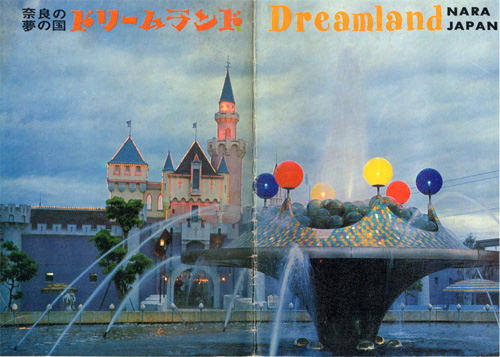


Sean bienvenidos japonistasarqueológicos, a una nueva entrega, esta ocasión nos trasladamos al antiguo solar donde se localizaba el antiguo parque de atracciones Nara dreamland. - Esperó que os guste y nos vemos en próximas publicaciones, que pasen una buena semana.¿Lo conocían? - 今回は、旧奈良ドリームランド遊園地があった場所に移動して、新たな回をお届けします。 - あなたがそれを好きで、今後の出版物でお会いすることを望みます、良い一週間を過ごしてください、あなたはそれを知っていましたか? - Welcome to a new installment, this time we move to the old site where the former Nara dreamland amusement park was located. - I hope you like it and see you in future publications, have a good week, did you know it?
-
 lalakzo reblogged this · 2 months ago
lalakzo reblogged this · 2 months ago -
 lalakzo liked this · 2 months ago
lalakzo liked this · 2 months ago -
 beaver-moon reblogged this · 4 months ago
beaver-moon reblogged this · 4 months ago -
 beaver-moon liked this · 4 months ago
beaver-moon liked this · 4 months ago -
 rodolfo9999 liked this · 7 months ago
rodolfo9999 liked this · 7 months ago -
 kerovousphoto liked this · 8 months ago
kerovousphoto liked this · 8 months ago -
 vestaignis liked this · 9 months ago
vestaignis liked this · 9 months ago -
 bear-pattern-hamster liked this · 10 months ago
bear-pattern-hamster liked this · 10 months ago -
 repera23 liked this · 10 months ago
repera23 liked this · 10 months ago -
 walkersarms liked this · 11 months ago
walkersarms liked this · 11 months ago -
 anenglishmanabroad reblogged this · 11 months ago
anenglishmanabroad reblogged this · 11 months ago -
 artani liked this · 11 months ago
artani liked this · 11 months ago -
 u-nobu liked this · 11 months ago
u-nobu liked this · 11 months ago -
 summerwages liked this · 11 months ago
summerwages liked this · 11 months ago -
 noticiasarquelogicasjaponesas reblogged this · 11 months ago
noticiasarquelogicasjaponesas reblogged this · 11 months ago -
 schlossherr reblogged this · 11 months ago
schlossherr reblogged this · 11 months ago -
 burgomeester reblogged this · 11 months ago
burgomeester reblogged this · 11 months ago -
 misterio-m liked this · 11 months ago
misterio-m liked this · 11 months ago -
 vivencias-del-alma liked this · 11 months ago
vivencias-del-alma liked this · 11 months ago -
 babylon-iraq-baghdad liked this · 11 months ago
babylon-iraq-baghdad liked this · 11 months ago -
 yoooko-o liked this · 11 months ago
yoooko-o liked this · 11 months ago -
 24-04-toro liked this · 11 months ago
24-04-toro liked this · 11 months ago -
 noseysilverfox liked this · 11 months ago
noseysilverfox liked this · 11 months ago -
 sicks93 liked this · 11 months ago
sicks93 liked this · 11 months ago -
 gunduzmetin liked this · 11 months ago
gunduzmetin liked this · 11 months ago -
 susuz-yolcu liked this · 11 months ago
susuz-yolcu liked this · 11 months ago -
 emaadsidiki liked this · 11 months ago
emaadsidiki liked this · 11 months ago -
 ai-mai liked this · 11 months ago
ai-mai liked this · 11 months ago -
 mikuninosakai liked this · 11 months ago
mikuninosakai liked this · 11 months ago -
 rorydbe liked this · 11 months ago
rorydbe liked this · 11 months ago -
 hello-matu-universe reblogged this · 11 months ago
hello-matu-universe reblogged this · 11 months ago -
 hiromusicarts-blog liked this · 11 months ago
hiromusicarts-blog liked this · 11 months ago -
 japanese-gum liked this · 11 months ago
japanese-gum liked this · 11 months ago -
 anenglishmanabroad liked this · 11 months ago
anenglishmanabroad liked this · 11 months ago -
 divorce liked this · 11 months ago
divorce liked this · 11 months ago -
 noticiasarquelogicasjaponesas reblogged this · 11 months ago
noticiasarquelogicasjaponesas reblogged this · 11 months ago

238 posts









